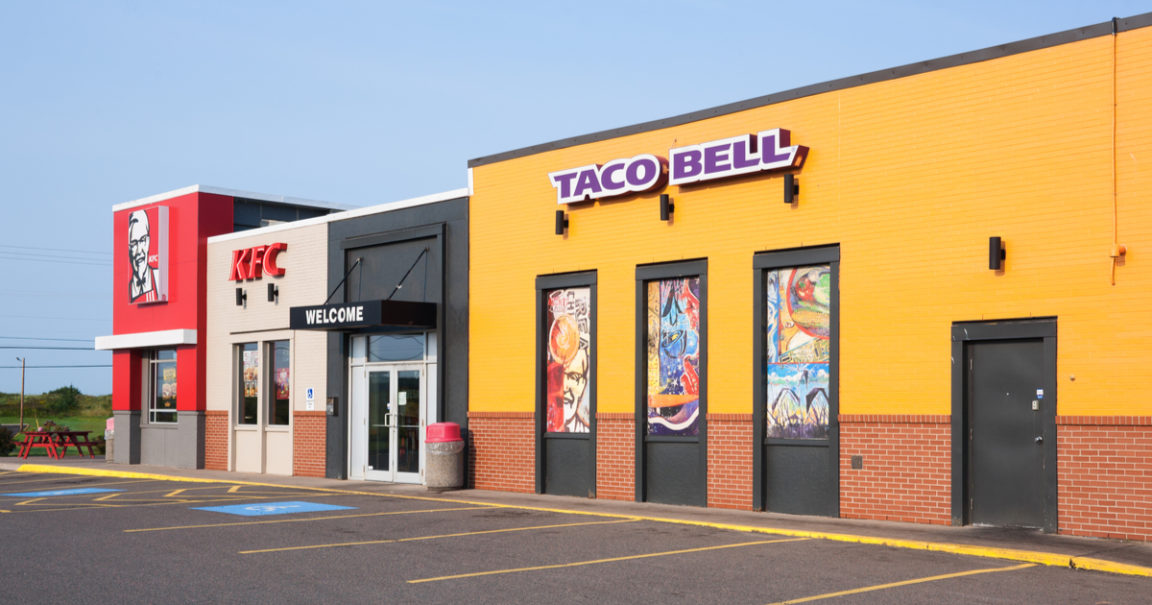The fast-food industry has been a huge part of everyone’s lives. Fast food provides the convenience of having meals rather than preparing them at home, especially on the busiest of days. In the modern era, it is probably the biggest food industry that caters good meals to everyone, given the fact that it is also affordable compared to dining in at restaurants. Given the surge of preference for quick and cheap food, fast-food chains have made it easier and faster for consumers to order their favourite meal, either dine-in or takeaway. Nevertheless, how can fast food and customers benefit from each other when there’s so much at stake given the ongoing pandemic?
The Food Court and Fast-food Industry
Food courts in Australia have significantly grown over the years. Within my lifetime, I’ve seen the number of shopping centres around Melbourne grow and the older ones have rapidly expanded in size. Each with a food court, or multiple food courts in larger malls. The bigger the shopping centre, the more foot traffic and the more fast food or in-store dining is required. I’ve seen Highpoint shopping centre add a second and third food court or dining area, and Werribee Plaza change to Pacific Werribee with a second food court plus its Urban Diner section open, plus more random eateries throughout. It’s nearly impossible to go to these places without sneaking a snack or meal whilst you’re there.
With so many options in a food court, it’s not uncommon for each member of the family or group to order something from a different store to each other. This is great for people with different diets or budgets. This is a massive advantage of having a food court in malls, with so many food possibilities available.
Most food courts have a variety of options, usually including your typical major chains such as McDonald’s, Burger King / Hungry Jack’s, Subway, Taco Bell and KFC as well as smaller independent or smaller franchises focusing on a particular country’s cuisine or diet. Most of which is pre-prepared, allowing your group to all get served, sat and fed quickly. The food court industry always tends to cater to lower-cost meals, and it can also be bought even if you are on a budget. It is a great alternative to dine-in restaurants which can also be found outside or on the edges of shopping centres. My local Pacific Werribee in Melbourne Australia includes Grill’d Healthy Burgers, San Churro, Dumpling Story, Schnitz, Guzman Y Gomez Mexican, Groove Train and The Pancake Parlour.
Takeaway Food Consumption in Australia
According to research from Roy Morgan Institute, about 17 million Australians aged 14+ buy or eat takeaway food from leading fast-food chains such as Mcdonalds, KFC, Subway, and the like. The statistics also suggested that most Australians prefer buying fast food to preparing food at home because of its convenience, due to the cheap prices of fast-food, especially the “Family Boxes” which allow you to get discounted bundles. In another study conducted by NobleOak, 32% of Australians spend their weekly meal budget on fast food, especially for working individuals. The growing number of people ordering takeaway food has increased in the recent year and is unlikely to decrease in the future. Most Australians are hooked on having their food prepared in a faster and easier way. This isn’t only true for adults but for everyone of different ages. Fast food is something everyone can never get tired of eating, and even though a pandemic is ongoing, fast food is still a thriving business not only in Australia but for every country as well. Most people in my office order from Menulog or Ubereats every day.
Drive-thrus and Australia’s Commuting Habits
Even so, Australia’s drive-thru and takeaways were still on a significant rise before the pandemic happened. In the report of the Motor Vehicle Census in Australia conducted by the Australian Bureau of Statistics, there are 19.8 million registered motor vehicles in the country as of the first month in 2020. Most of the numbers garnered have been found to be in the working class. Consequently, in the busiest of days, drive-thrus are indeed a to-go place when time constraints are inevitable. This means that the more people own and use cars, the higher the probability of them having a quick stop for a meal or snack through drive-thrus. Thus, fast-food chains and restaurants are now considering expanding their drive-thrus even further to accommodate consumers in motor vehicles, especially in extreme weather conditions when no one wants to get out from the comforts of their cars.
Threats to Fast Food from the Pandemic
The surge of people ordering fast food has also ballooned up by the start of the Covid-19 pandemic in 2020. In March of the same year, the Federal Government of Australia banned dine-ins in fast-food chains so as to avoid risks of getting the virus from direct contact with people. Still, according to NPD Group Inc., the decline in the number of customers dining in has already started to go down even before the Federal Government introduced dine-in restrictions. Despite this, the sales of the food industry still went up as there was an increase in traffic for takeaways, drive-thrus, and online orders. Given the risks and restrictions with dining in, Australians are now resorting to having their food delivered right to their doorstep.
Ordering takeaway food from various fast-food chain favourites makes it convenient and safer for Australians, which is also conducive to be less likely exposed to other people. With the rise of delivery and takeaway preferences, fast-food chains are now shifting from a traditional dining experience to a takeaway and delivery business model. For instance, Taco Bell in the United States is now planning on a concept in the opening of “go mobile” locations in Minnesota that has no dining area at all. There will be designated pick-up spots for mobile orders and there will be four drive-thru lanes for faster and more systematic transactions. This strategy saves the company space that is 47% smaller than a traditional Taco Bell restaurant but still more profitable than usual. A series of dumbwaiters is going to drop food from the kitchen above down to each lane of drive-thru traffic.
The plan even attracts other fast-food chains and are now considering expanding their designated drive-thru spaces to also reduce their expenses on dine-in services and provide a much for efficient service for customers.
Interestingly, Melbourne Australia had a drive-thru-only KFC near the Westgate freeway inbound for years until recent years, perhaps due to the Hungry Jack’s opening nearby on the same side of the road. The building is still empty in 2021. The Outbound KFC with dine-in is still there and was also 24 hours until recently.
Food Court Drive-thrus: The Future in the Post-Covid Era
Driving and travelling from home, office or to the shops isn’t something Australians are new to. Most people spend so much time driving than actually working at their office or even compared to staying at home. This kind of routine has been prevalent in recent years in Australia and is less likely to change given that it has now been deemed a normal way of living. Typically, when so much time is consumed on the road, our time for other things is shortened; such as cooking our own food at home isn’t something we can do every day.
When we have less time for preparing food at home, such as preparing our lunch in the morning our only way to have a good meal is food courts if you work near one. During the pre-Covid days, food courts have been one of the most convenient sources of food for many Australians working in cities or shopping centres. However, the restrictions by the Federal Government on dining in food courts had them closed for a period, then later reopened with reduced capacity due to the risk of getting the virus. This in turn makes food courts less safe given the dangers imposed by being in contact with other people and the fact that the tables are usually filthy. As social distancing is now a responsibility of everyone, most Australians have their food on takeaway through drive-thrus.
The growth in the Australian food industry made way for new innovations to keep up with the rise of demand for takeaway orders and drive-thrus. In a report published by Mordor Intelligence, over 50 million meals are made per week in Australia and fast-food companies have to always keep up with the growing demand. Like any other fast-food chain, food courts are now getting into action by implementing a sales strategy that is suitable for consumers and businesses as well. Fast-food chains and several businesses are now partnering up to be able to provide Australians with more options when doing takeaway. Imagine going into a single drive-thru, it would be a hassle ordering a single food and going to another just to get something for dessert. This may sound funny but it is actually real. The more travel time we do just to satisfy our appetite, the more hassle it gets; getting to line up all over again is just something we can barely stand.
What are Ghost & Cloud Kitchens?
Considering the growing market, fast-food chains are also incorporating ghost kitchens to alleviate the growing demand for pick-up food. Ghost kitchens (or Cloud Kitchens) are restaurants with no physical storefront and just need food delivery applications like GrubHub, Menulog, Deliveroo or UberEats to reach out to their clients. Fast-food workers from different restaurants may be able to partner up by operating in a commercial and centralised kitchen to save space, costs, and even leases compared to having a physical store; there will also be no need to go through long processes just to get the permits. People may not be able to visit a restaurant, but ghost kitchens can actually produce a ton of items and services and focus on mass production. The strategy can make the food business produce more without having more costs.
Evidently, drive-thrus and ghost kitchen strategies are mutually beneficial to food business owners and consumers as a whole. The benefits and innovation of both concepts are now even more understandable in the advent of the Covid-19 pandemic. For most customers, convenience has always been the main reason why they choose to go into drive-thrus or prefer food delivery services. The drive-thru and ghost kitchen system is something we all would love as ordering food delivery from multiple locations would cost less in delivery fees.
Another reason why drive-thru food courts and ghost kitchens are beneficial is the greater probability of the increase in the number of orders on any given day. When drive-thrus are very fast and efficient, there will be a quick turnover of people lining in and going out of fast-food drive-thrus. This means that businesses will be able to maximize their dine-in services to serve takeaway orders as Australians are now opting for a faster transaction rather than staying in the fast-food business’ premises. Expanding drive-thrus and having ghost kitchens may be the next big thing to increase revenue. Both strategies can also reduce operating expenses and just require efficient and fast food preparation to satisfy customers.
Given the Taco Bell example, one might picture a day where a ghost kitchen might exist that consists of KFC, Taco Bell and Pizza Hut all in one kitchen as all are owned by Yum! Brands Inc. Other companies that own multiple fast-food chains or groups of other independent restaurants could easily arrange for a ghost kitchen.
Before delivering out plans for a ghost kitchen facility, fast-food businesses should examine what makes an efficient drive-thru lane. This would be more complicated than any existing single-brand operation. When so many choices are on the menu, customers may have a hard time deciding what meal to choose. This means that it is also necessary to cut down choices and leave customers to pick the most popular and best-seller menus. Secondly, drive-thrus should also make use of technology as we are now in a phase of digital marketing; have touchscreen menus so the customers would be able to choose their order rather than having to talk to someone just to get their orders done. This in turn makes less contact with workers and customers. Less contact, fewer risks. The third and last would be to organize and expand kitchens. A systematic kitchen with a lot of people preparing food will result in smoother and faster transactions for clients. The faster the food will be prepared, the lesser queue there would be. Having drive-thrus should always be planned and examined thoroughly.
This illustrates why in-app ordering prior to arrival and food ordering apps could further support this business model. It would be best that an order is processed before the customer arrives so that the picking up of the order is fast, much like ordering delivering.
Summary
While the risks of the pandemic are still inevitable, more and more food businesses are now shifting into a newer sales strategy to attract customers. Drive-thrus are now even more prevalent as social distancing is implemented and restrictions to dining in are still a consideration for many parts of the world. In a post-COVID world, it is with no doubt that drive-thrus can be a beneficial tactic for food business owners. Yet, strategies should always be looked into closely to avoid disadvantages and negative impacts both to the business and customers. Still, the convenience, safety, and efficiency of fast-food drive-thrus are the key concepts as to why it can be sustainable for the future. Who doesn’t want fast and easy access to food, anyway?





